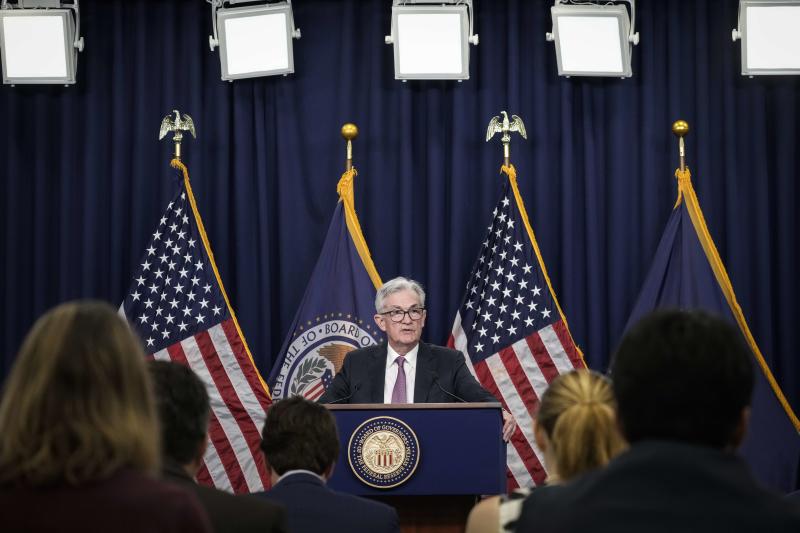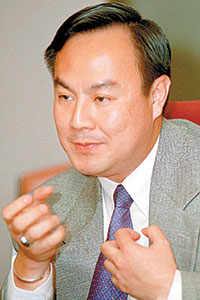
By the time this article is published, readers will know how much the US Fed funds rate has been raised for the fourth time this year. It does not really matter whether the rate is raised by 0.75% or 1% this time because the Fed will need to keep raising the rate (FFR) until it can effectively control inflation.
For that, the inflation rate should be pushed down from the level of 9.1% (June 2022 figure) to around 2%. To be able to achieve such an inflation target, the Fed will need at least 5.25% to do the job. I do not have a sophisticated macroeconomic model to crank out the interest rate needed to bring down inflation to 2%, and I doubt that the Fed or IMF have such a model anyway.
It is basically a trial-and-error exercise. The Fed would keep raising the FFR until inflationary pressure subsides. During 2004-2006, the Fed raised the FFR consecutively 17 times, 0.25% each time, pushing the FFR up from 1% to 5.25% to control rising inflation.
That 2004-2006 inflation control experience provides a clue as to how Jerome Powell's Fed might combat 2022 inflation. Let's see how things developed during that period. In the second quarter of 2004, the Fed spotted early signs of inflationary pressure as the inflation rate slowly rose from 1.9% in January to 3.1% in May. This prompted the Fed to raise FFR by 0.25% from 1% to 1.25% in June of that year.
Obviously, such a minimal rate hike did nothing to tame inflation. Instead, the US inflation rate kept increasing from 3.1% in May 2004 to 4.3% in June 2006. Meanwhile, the Fed kept raising the FFR until it peaked at 5.25% in June 2006.
Only at such a high rate was the Fed able to win the war and the inflation rate started to fall. By October 2006, the US inflation rate had plummeted to 1.3%. Please take note. A slow increase in interest rates -- 0.25% each time --resulted in a long-term (two-year) battle with inflation.
However, the Fed did not immediately lower the FFR after seeing the inflation rate fall below 2% in October 2006. They had to be absolutely sure that inflation would not come back and waited until September 2007 before they initiated the first interest rate cut.
The FFR was again lowered to 1% by October 2008. The cost of this inflation war was that US GDP growth rate dropped from 3.9% in 2004 to 2% in 2007.
From the 2004-2006 experience, 5.25% of FFR was necessary to fight a 4.3% inflation rate. With today's 9% inflation rate (and probably rising), the Fed would surely need a much stronger interest rate hiking scheme.
As I said, this is a trial-and-error exercise.
Mr Powell would have to keep raising the FFR until he sees sustained decline in inflation. One thing is for sure, Mr Powell has not taken gradual steps in interest rate hikes to date over the latest bout, as he raised the FFR 0.25%, 0.50% and 0.75% in previous moves.
The last time the US economy experienced super-high inflation was in 1979-1981 when inflation peaked at 14.8% in March 1980. The Fed raised the FFR to 20% to stop such inflation madness. Naturally, the Fed won this hyper-inflation war. By mid-1983, double-digit inflation rates had nosedived to 2.5%. The price was an economic contraction of 1.8% in 1982.
By tracking money supply growth over six decades, I'm afraid to say that the inflation situation of 2022 might be no better than that of the early 1980s. The 1979 oil crisis only affected one particular commodity -- crude oil. Political turmoil in Iran caused the crude oil price to jump from $65 per barrel to $140 per barrel but left the prices of other commodities unchanged. The 2022 inflation situation is a different ball game.
Based on the World Bank's commodity price data (updated to June 2022), the crude oil price has risen 62.7% and natural gas price 183%. Other major commodity prices have also risen well such as palm oil (49.4%), wheat (60.9%), chicken meat (54.1%), fertiliser (70%-180%) and sugar (8.8%). The numbers in parentheses indicate the price increase from June 2021 to June 2022.
I want to caution that we are now seeing an inflation recess as China, with its 1.4 billion consumers, is facing demand disruption stemming from Covid outbreak control. After the outbreak is under control or China alters its zero-Covid policy, Chinese demand will resume at normal levels and world inflation will be back in full swing.
The reason why there is such a broad-based price increase is that world demand rose much faster than supply. After the sub-prime financial crisis of 2008, major economies pumped an enormous amount of money into their economies to prevent economic fallout. The US alone commenced three rounds of quantitative easing in 2008, 2010, and 2012.
If that is not bad enough, central banks around the world pumped another round of massive liquidity into their economies in 2020 to avert a Covid-19 pandemic-induced recession. With excess cash in hand, demand rebounded quickly in 2021 after the Covid outbreak subsided due to effective vaccination.
These two big rounds of global liquidity injections caused world money supply to expand 35.9% during the decade of 2011-2020. In the earlier decade 2001-2010, world money supply grew at a normal rate of 8.4%. It is no doubt that excess money supply is the real cause of 2022 inflation, not the Russia-Ukraine war. This is, indeed, a classic case of demand-pull inflation.
There is no proper way to deal with this type of inflation but to raise interest rates to mop up excess liquidity from the global monetary system. Of course, the price of this policy move is an economic slowdown or even economic recession.
The IMF confirms this when they revised the world economic growth outlook downward to 3.2% for this year and 2.9% for next year. However, I think the IMF's assumption on 2022 inflation rates -- 6.6% in advanced economies and 9.5% in emerging markets -- might be on the low side.
By the way, most people believe the US must be the world's number one culprit for inflation, after liquidity injections from three rounds of QEs and Covid stimulus packages. In fact, many believe that the US dollar will soon become worthless as Fed keeps printing money relentlessly. Wrong. The number one culprit for money printing is China as they injected 34% more liquidity, compared to the US, into their economy. By the end of 2020, the ratio of money supply to GDP was 211.9% for China and 111.5% for the US. The ratio is 123.4% for Thailand. No wonder there is a real estate bubble in China.
Inflation is always caused by having too much money. To lower inflation, one must simply remove excess liquidity from the system by raising rates. The Fed is doing just that and there is a lot more to be done. It is painful for the economy, but there is no other choice.
